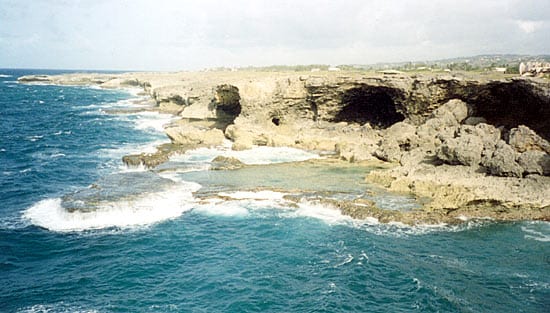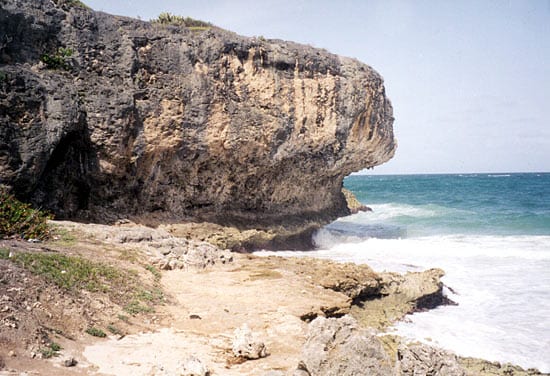New Coral Dating Technique Helps Resolve Changes in Sea Level Rise in the Past
April 15, 2005
Corals from Papua New Guinea and Barbados indicate that changes in sea level, one of the key indexes for global climate change, may have been more frequent in the past than previously thought, according to a report in today’s issue of Science.
Researchers from the Woods Hole Oceanographic Institution (WHOI) and Columbia University developed a new set of dating equations to determine the ages of corals from the Pacific and Atlantic Oceans to help resolve a longstanding question about the influence of Earth’s orbital variations on sea-level rise in the past. Their approach improves sea-level reconstructions using coral ages and indicates that past sea level changes have been too frequent to be explained solely by orbital changes.
Reef corals are commonly used to reconstruct changes in sea level over time because they grow near the sea surface. Fossil corals found above or below current sea level show variations in sea level and can be dated by radiocarbon for the past 40,000 years and by the radioactive decay of uranium to thorium for the past 500,000 years. Unfortunately, corals that appear to be otherwise pristine often have more of the isotopes used for dating than can be explained by radioactive decay, making their ages unreliable.
“Sea level is more variable than previously thought over a period between 70,000 and 250,000 years ago,” said William Thompson, a postdoctoral fellow in the WHOI Geology and Geophysics Department and lead author of the study. “Substantial shifts occur over a few thousand years, during both glacial and interglacial periods, with rates of change that exceed estimates of modern sea level rise. Although sea level over the past few thousand years appears to have been relatively stable, this seems to be the exception rather than the rule.”
The new method used by Thompson and co-author Steven Goldstein of Columbia University has provided a detailed sea-level record for the period of time between 250,000 to 70,000 years ago. Little accurate data has been available for this period, when some of the changes could be explained by orbital changes but others could not.
Most radiometric dating techniques rely on the assumption of a closed system, meaning that once the ‘clock’ starts there is no gain or loss of the isotopes used for dating. The parent isotopes are put into a box, and the box is closed. At some later time, if you count the number of parent and daughter isotopes, you can determine the length of time the box has been closed very precisely.
“In the case of corals, it’s been clear for a long time that most samples have not behaved this way,” Thompson said. “We’ve discovered that corals behave as a two-box system. There is a very small leakage, usually an addition, of daughter isotopes to the coral from the surrounding material. The key is that this transfer also depends on radioactive decay. You can simply rewrite the decay equations to account for the transfer of daughters between boxes, allowing you to calculate ages for corals that have behaved as ‘leaky boxes’. We refer to this new dating approach as ‘open-system’ dating.”
Thompson and Goldstein compared speleothem records of sea level and climate from caves in the Austrian Alps, France, Tasmania and Brazil with their sea-level reconstructions for corals. They found agreement for high sea level at times of warm, wet climate conditions and lower sea level at times of cold/drier climate conditions. They also compared their data with salinity records from the Red Sea and found similar agreement, further verifying their model.
The team’s findings raise questions about the conditions required for the growth of ice sheets and the causes of rapid changes in sea level.


